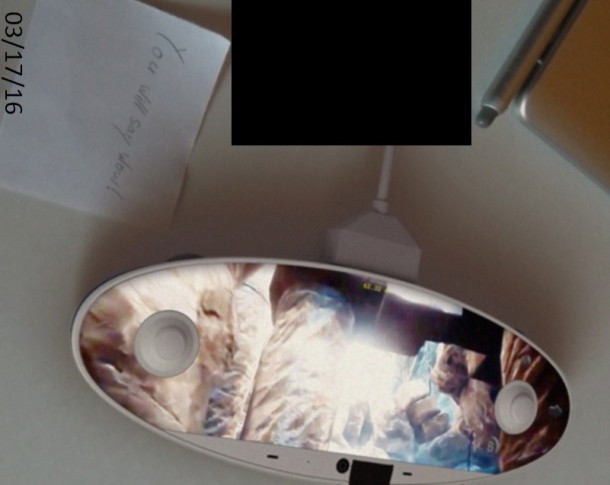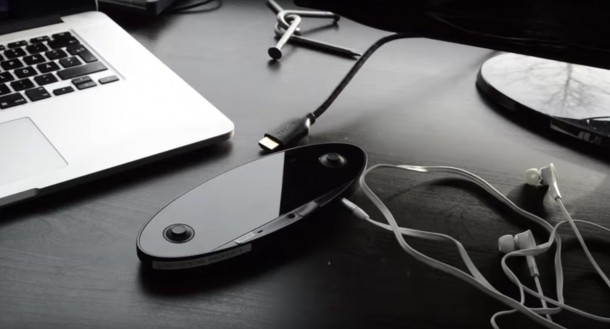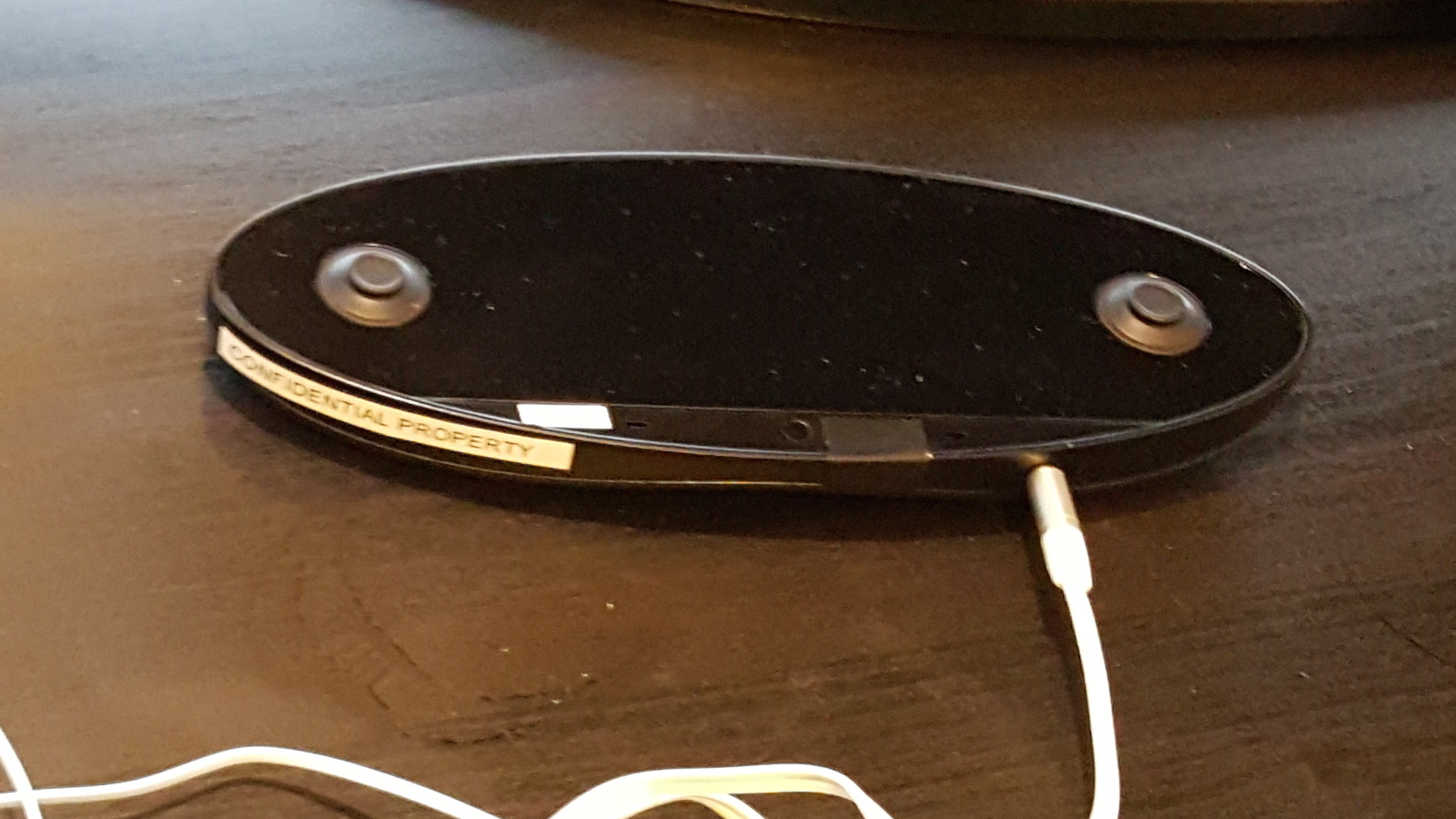There was a lot of hullabaloo over the last week about a series of separate images purported to be “leaked” pre-production Nintendo NX controller prototypes. The images show a design nearly identical to a patent that Nintendo had created for a football-shaped touch-screen device with two thumb sticks and two scroll wheel L- and R-buttons. According to the patent, the touch screen could be reconfigured to show contextual buttons instead of the traditional hard, clicky style.
The images depicted “confidential” prototypes — the original one a white controller with a video running on its screen, and the second one in glossy black. Many websites ran the images as potential leaks, with corroboration from a source here or there that lined up with the “no buttons” concept. We held off because we knew something wasn’t quite right. Now we know those images are fake and the leaks debunked.

How did we know? Having an art school background immediately made me pessimistic about the first image. The lighting was off, the on-screen image was shadowing incorrectly, and the angle of the device compared to the table it was resting on was completely wrong. It was, at an easy glance, fake.
As for the second image, it was much more difficult to deduce. I ran through my series of typical image checks (angle, coloring, lighting, reflections not only on the device but on the other products in the photo) and couldn’t verify it as a Photoshopped picture. It was, for all intents and purposes, a real product sitting in the real world. However one thing did hit me as a potential issue, and that was that the second controller lacked the microphone hole that the first image did. A second issue was the curvature of the ends of the “football”; the white controller had much softer rounds, while the black had more sharpened points. Companies do send updated prototypes to developers, but probably none that were so different as to alter those two important aspects. But could two different people create two fake controllers so closely in time?

So my thoughts went to the next possibility, that this second controller is a 3D printed fake based off of the first one. I ran the idea past a coworker of mine in our very own prototype lab, and he stated the product could be created in a weekend. It’s easy to create a model in CAD software and have it 3D printed in a matter of days or even hours. With 3D printers being inexpensive, and free modeling software available online, someone could do it — if they had the free time, hustle and, most importantly, a good set of modeling skills.
And that’s just what they did.
The first controller was revealed as a Photoshopped fake, and the second followed just a few hours later as a 3D printed model, both with terrific step-by-step videos. For all the fervor and hate and conversation that had taken place about the possibilities (and the relative quiet by Nintendo to through a wet blanket on it) the reveals weren’t met with anger, but with a level of respect. These probably were the most elaborate fakes to grace us in the gaming industry, from the first jab to the right hook of the 3D printed model.
As a designer, the second model was growing on me. It was well-crafted, and had an elegant shape and cleanliness to it. The surfaces were clean, the different gloss levels were complimentary, and it felt very, very real. I dare say that I was kind of liking it. It seemed like a device that I could see myself owning and a controller that may not be all that bad to use (if a couple of more buttons could be added to it, that is). The video was well done, showing the entire modeling process. From understanding sub-flush surfaces to wetsanding and material mixture, the process is worthy of more than just a passing glance.
Well done to the creators of the mockups. Expect job offers from design and fabrication companies to flow your way.


No Comments